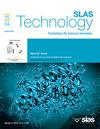Titanium surface functionalization with calcium-doped ZnO nanoparticles for hard tissue implant applications
IF 3.7
4区 医学
Q3 BIOCHEMICAL RESEARCH METHODS
引用次数: 0
Abstract
Implant-associated infections remain a significant challenge in orthopaedic and dental implants because they frequently result in implant failure, extended hospital stays, reoperations, and increased healthcare costs. Studies have shown that the cost of managing orthopaedic implant infections can range from USD 30,000 to over USD 100,000 per case, depending on severity and required surgical interventions. One of the primary pathogens responsible for these infections is Staphylococcus aureus, known for its potential to make biofilms on the surfaces of implants. To address this problem, this study investigates the formation of calcium phosphate-based biomimetic coatings substituted with calcium-doped ZnO nanoparticles on titanium discs to strengthen the antibacterial properties and enhance tissue integration. The SEM analysis of discs revealed uniform and dense coating layers with negligible surface defects, indicating a strong adhesive coating on titanium discs. The biomimetic-coated titanium implants with Ca-doped ZnO NPs were then evaluated for antibacterial activity using a closed system in an in vitro biofilm model. In case of 14 days treated disc, a significant increase in the antibacterial properties was observed against (Staphylococcus aureus, p < 0.0001). These findings suggest that calcium phosphate-based biomimetic coatings, doped with calcium-doped ZnO NPs show great potential for reducing the risk for implant-associated infections and improving the success rate of implants in clinical settings.
钙掺杂ZnO纳米颗粒对钛表面功能化的研究
种植体相关感染仍然是骨科和牙科种植体的一个重大挑战,因为它们经常导致种植体失败、延长住院时间、再手术和增加医疗费用。研究表明,根据严重程度和所需的手术干预措施,治疗骨科植入物感染的费用从每例3万美元到10万美元以上不等。造成这些感染的主要病原体之一是金黄色葡萄球菌,它以在植入物表面形成生物膜的潜力而闻名。为了解决这一问题,本研究研究了在钛盘上形成磷酸钙基仿生涂层,取代钙掺杂ZnO纳米颗粒,以增强抗菌性能和增强组织整合。扫描电镜分析表明,钛盘表面涂层均匀致密,表面缺陷可忽略不计,表明钛盘表面具有较强的粘结性涂层。然后在封闭系统的体外生物膜模型中评估了含ca掺杂ZnO NPs的仿生包覆钛植入物的抗菌活性。在治疗椎间盘14天的情况下,观察到对金黄色葡萄球菌的抗菌性能显著增加,p <;0.0001)。这些发现表明,掺钙ZnO纳米粒子的磷酸钙仿生涂层在降低种植体相关感染风险和提高临床种植体成功率方面具有很大的潜力。
本文章由计算机程序翻译,如有差异,请以英文原文为准。
求助全文
约1分钟内获得全文
求助全文
来源期刊

SLAS Technology
Computer Science-Computer Science Applications
CiteScore
6.30
自引率
7.40%
发文量
47
审稿时长
106 days
期刊介绍:
SLAS Technology emphasizes scientific and technical advances that enable and improve life sciences research and development; drug-delivery; diagnostics; biomedical and molecular imaging; and personalized and precision medicine. This includes high-throughput and other laboratory automation technologies; micro/nanotechnologies; analytical, separation and quantitative techniques; synthetic chemistry and biology; informatics (data analysis, statistics, bio, genomic and chemoinformatics); and more.
 求助内容:
求助内容: 应助结果提醒方式:
应助结果提醒方式:


